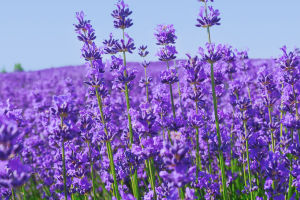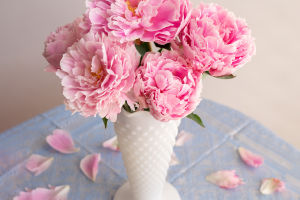Anthuriums, with their distinctive heart-shaped blooms and lush foliage, have captivated plant lovers worldwide.
This blog delves into the essence of anthuriums, exploring their symbolism, diverse varieties, and essential care tips.
What Is an Anthurium?
Dear Lykkers. Anthuriums, often referred to as Flamingo Flowers or Laceleaf, are vibrant and exotic plants belonging to the Araceae family. This diverse genus encompasses over 1000 species, each with its own unique charm. Native to the tropical rainforests of Central and South America, these plants are admired for their glossy, heart-shaped leaves and colorful spathes, often mistaken for flowers. The true flowers of anthuriums are small and line the central spadix, a spike-like structure emerging from the spathe.
Characteristics of Anthuriums
Appearance
Anthuriums are famous for their bright, waxy spathes, which come in striking colors like red, pink, white, and purple. Depending on the species, the spadix may be straight or curled.
Growth Habit
These plants are epiphytes in their natural habitat, growing on other plants. However, they adapt well to indoor environments, thriving in soil with good drainage.
Size and Shape
The size and shape of anthuriums vary widely among species. Some are compact with small leaves, while others grow large, with leaves stretching several feet in length.
Just one slice of onion can make Anthurium explode with so many beautiful flowers
Video by Natural Fertilizer
Origin and Symbolism
Anthuriums originate from tropical regions of Central and South America. Their name derives from Greek words meaning "flower" and "tail," reflecting their spadix and spathe structure. Symbolically, red anthuriums convey passion and enthusiasm, pink signifies hospitality and warmth, and white represents purity and innocence. These versatile meanings make them ideal for various occasions, including Valentine's Day.
Diverse Varieties: Types of Anthuriums
Anthurium Radicans
Known for its deep green, velvety leaves with prominent venation, Anthurium Radicans thrives in well-draining soil and high humidity, making it a stunning tropical addition to indoor collections.
Anthurium Salgarense
This variety is prized for its large, glossy leaves and robust growth. It flourishes in bright, indirect light with consistent moisture, bringing a lush tropical vibe to any space.
Anthurium Bullatus
Distinguished by its bumpy, bullate leaf texture, Anthurium Bullatus requires a balance of good light and moisture to maintain its unique appearance, captivating plant enthusiasts.
Anthurium Jenmanii
Admired for its elongated, dark green leaves, Anthurium Jenmanii adds a dramatic touch to any plant collection. High humidity and regular watering are essential for its growth.
Anthurium Pendulifolium
This variety stands out with its pendulous, heart-shaped leaves, making it an excellent choice as a hanging plant. It thrives in well-lit environments with high humidity.
Anthurium Vittarifolium
Featuring long, strap-like leaves, Anthurium Vittarifolium adds an exotic appeal to any Anthurium collection. It prefers indirect sunlight and a warm, humid environment.
Anthurium Clarinervium
Renowned for its heart-shaped leaves with striking white venation, Anthurium Clarinervium thrives in warm, humid conditions with indirect light. Proper care ensures its leaves remain vibrant.
Anthurium Care
To keep anthuriums thriving, follow these care tips:
- Light: Bright, indirect sunlight is ideal. Avoid direct sunlight to prevent leaf scorch.
- Watering: Water when the top inch of soil feels dry. Avoid overwatering to prevent root rot.
- Humidity and Temperature: High humidity (around 80%) and temperatures between 68–85°F (20–29°C) are essential.
- Soil: Use a well-aerated, fertile soil mix. A blend of orchid bark, peat moss, and perlite works well.
- Fertilization: Feed monthly during the growing season with a high-phosphorous fertilizer.
- Pest and Disease Management: Regularly inspect for pests like aphids, mealybugs, and spider mites. Ensure proper watering and air circulation to prevent diseases.
Potential Problems
Pests: Watch for common pests such as aphids, mealybugs, and spider mites.
Diseases: Be alert for root rot, bacterial blight, and fungal diseases like anthracnose.
Environmental Stress: Browning leaf edges may indicate improper humidity or temperature levels.
Anthuriums are more than just eye-catching houseplants; they are symbols of beauty, love, and hospitality. By understanding their needs and providing proper care, you can enjoy these tropical wonders for years to come.


